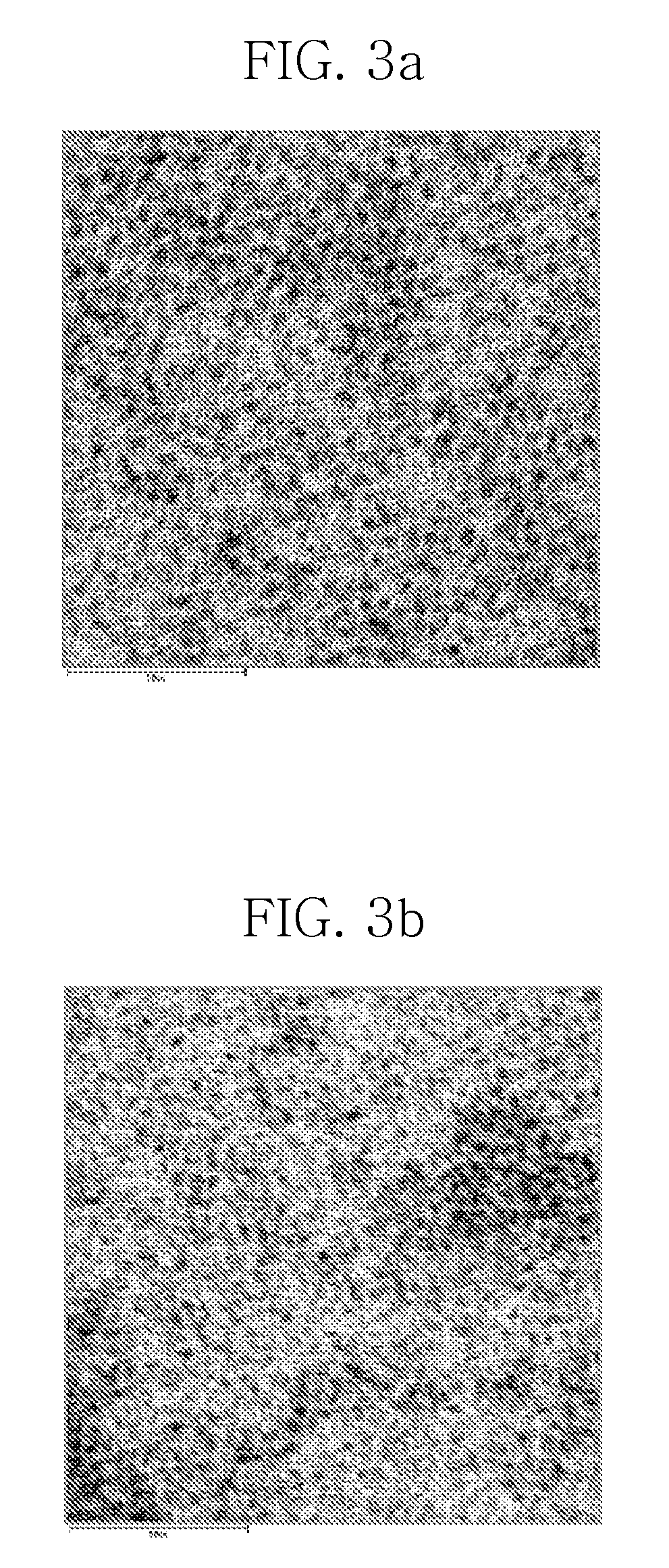Method for preparing metal phosphide nanocrystal from phosphite compound and method for passivating nanocrystal core with the same
a technology of metal phosphite and nanocrystals, which is applied in the field of passivating nanocrystal cores with the same, can solve the problems of long synthesis time, limited number of potential precursors, and the synthesis of semiconductor nanocrystals, and achieves the effect of easy control
- Summary
- Abstract
- Description
- Claims
- Application Information
AI Technical Summary
Benefits of technology
Problems solved by technology
Method used
Image
Examples
example 1
Synthesis of InP Nanocrystals from a Triethylphosphite Compound at about 300° C.
[0067]Ten grams (g) of octadecene (“ODE”), 0.2 g of oleic acid, and 0.2 mmol of indium acetate were put in a 125 ml flask equipped with a reflux condenser. The mixture was reacted with stirring until the reaction temperature reached about 300° C.
[0068]Separately, about 70 microliters (μL) of triethylphosphite was dissolved in 1 mL of ODE to prepare a solution. The solution was rapidly added to the reaction mixture. The mixture was reacted with stirring for about one hour.
[0069]After the completion of the reaction, the reaction temperature was cooled to room temperature as quickly as possible. Ethanol as a non-solvent was added to the cooled reaction mixture, and the resulting mixture was centrifuged. The suspension was decanted away to obtain a precipitate. The precipitate was dispersed in 5 mL of toluene to yield a solution of InP nanocrystals. FIG. 2 shows the UV absorption spectrum for the InP nanocry...
example 2
Synthesis of InP Nanocrystals from a Triethylphosphite Compound at about 320° C.
[0070]Ten g of ODE, 0.2 g of oleic acid and 0.2 mmol of indium acetate were put in a 125 ml flask equipped with a reflux condenser. The mixture was reacted with stirring until the reaction temperature reached about 320° C.
[0071]Separately, about 70 μL of triethylphosphite was dissolved in 1 mL of ODE to prepare a solution. The solution was rapidly added to the reaction mixture. The mixture was reacted with stirring for about one hour.
[0072]After completion of the reaction, the reaction temperature was cooled to room temperature as quickly as possible. Ethanol as a non-solvent was added to the cooled reaction mixture, and the resulting mixture was then centrifuged. The suspension was decanted away to obtain a precipitate. The precipitate was dispersed in 5 mL of toluene to yield a solution of InP nanocrystals. FIG. 2 shows the UV absorption spectrum for the InP nanocrystals. As shown in shown in FIG. 2, a...
example 3
Synthesis of CdSe / CdS Nanocrystal and Formation of InP Passivation Layer
[0073]Sixteen g of trioctyl amine (“TOA”), 2.0 g of oleic acid, and 1.6 mmol of cadmium oxide were put in a 125 ml flask equipped with a reflux condenser. The mixture was reacted with stirring until the reaction temperature was adjusted to about 300° C.
[0074]Separately, a selenium (Se) powder was dissolved in trioctyl phosphine (“TOP”) to prepare a Se-TOP complex solution (Se concentration: ca. 0.1 M). The Se-TOP complex solution was rapidly added to the stirring reaction mixture and further reacted for about 2 min. To the reaction mixture a solution of octane thiol (0.06 g) in TOA (2 mL) was slowly added. The reaction mixture was allowed to stand at the same temperature (about 300° C.) for about 30 minutes.
[0075]After completion of the reaction, the reaction temperature was cooled to room temperature as quickly as possible. Ethanol as a non-solvent was added to the cooled reaction mixture, and the resulting mix...
PUM
| Property | Measurement | Unit |
|---|---|---|
| temperature | aaaaa | aaaaa |
| temperature | aaaaa | aaaaa |
| temperature | aaaaa | aaaaa |
Abstract
Description
Claims
Application Information
 Login to View More
Login to View More - R&D
- Intellectual Property
- Life Sciences
- Materials
- Tech Scout
- Unparalleled Data Quality
- Higher Quality Content
- 60% Fewer Hallucinations
Browse by: Latest US Patents, China's latest patents, Technical Efficacy Thesaurus, Application Domain, Technology Topic, Popular Technical Reports.
© 2025 PatSnap. All rights reserved.Legal|Privacy policy|Modern Slavery Act Transparency Statement|Sitemap|About US| Contact US: help@patsnap.com



